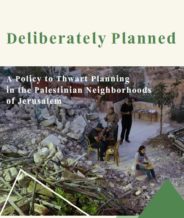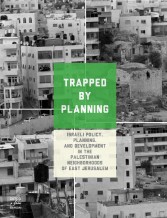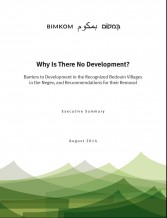The Jerusalem Post: June 22, 2017 Qalqilya has been affected by increasing urban density, as it is exceedingly difficult for Palestinians to build in sections of the city in Area C, and insufficient land to allow for future growth was placed within the portions of the city under PA control in the Oslo Accords Read … read more
Haaretz: April 6, 2017 East Jerusalem neighborhoods beyond the Separation Barrier have been largely neglected by the municipality yet also less affected by demolitions, making the move to demolish several residences in Al-Zaim all the more unusual. Most of Al-Zaim is located within Area C, although the dividing line is not demarcated, which leaves the … read more
Haaretz: December 27, 2016 Data released to the public in accordance with a request filed by Bimkom shows that between 2014 and 2016 the Civil Administration approved 53 applications for building permits, while demolishing 983 buildings over the same period. Read the article here.

Ir Amim and Bimkom are pleased to announce the launch of our joint report, “Deliberately Planned: A Policy to Thwart Planning in the Palestinian Neighborhoods of Jerusalem.” The new report demonstrates how the Israeli authorities deliberately delay and ultimately undermine the approval of plans that actually allow for construction in the Palestinian neighborhoods of Jerusalem. … read more

Over the course of almost fifty years, the Jerusalem Municipality and the Israeli national planning authorities have dealt extensively with planning in Jerusalem, including the planning of the Palestinian neighborhoods of East Jerusalem. And yet, despite the many plans that have been drawn up and approved in this period, the planning situation in these neighborhoods … read more

Of the Bedouin villages in the Negev, only 12 (one of them just recently in 2014) have been recognized by the government. The government planning process for the recognized villages has largely ignored their spatial reality and its logic. In practice, only 128 residential building permits were issued in only two villages.



